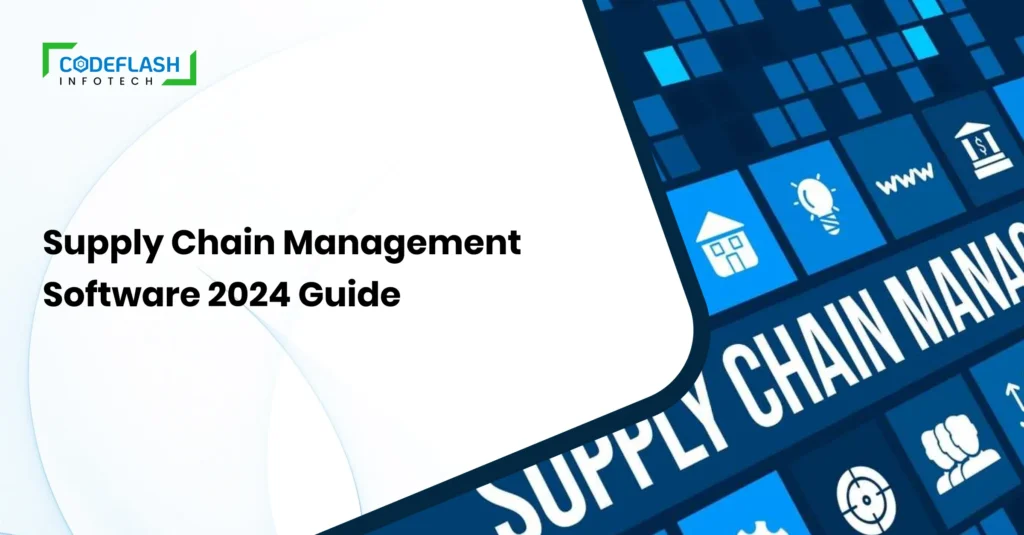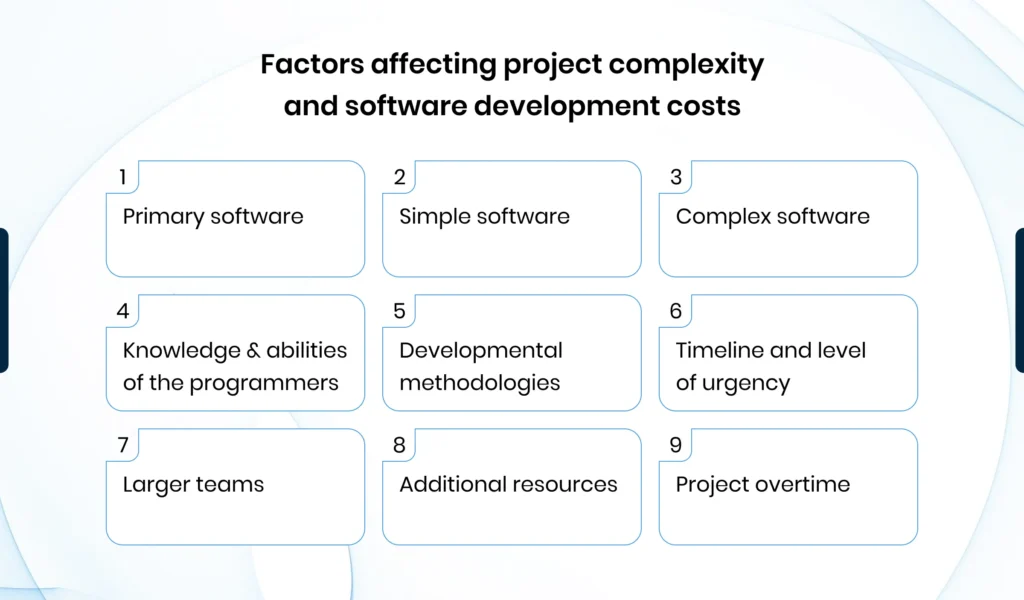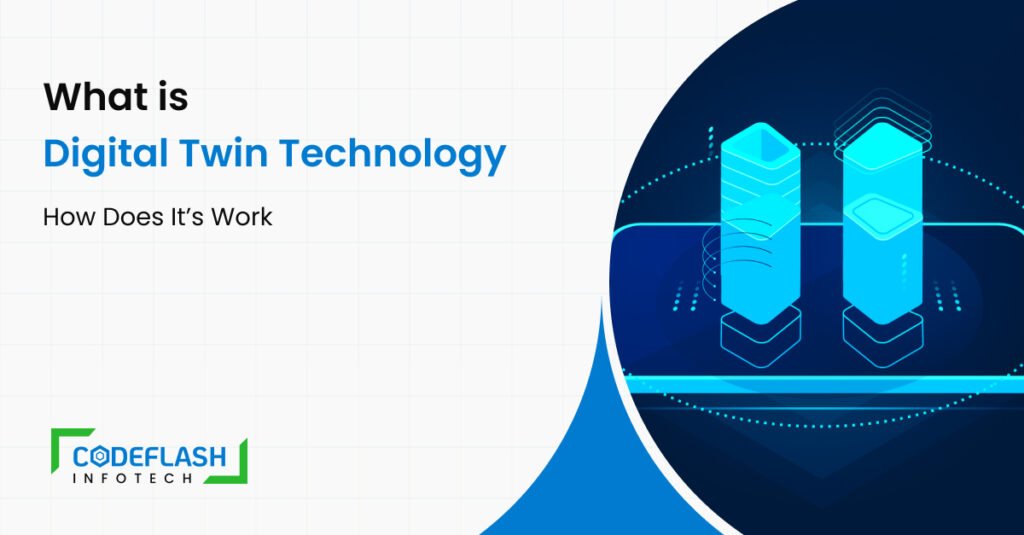
Supply Chain Management Software 2024 Guide
23 AUGUST
Supply chain management is the process of planning, organizing, and executing the movement of goods and services from their point of origin to the final point of consumption. This comprehensive approach encompasses various activities, including inventory management, manufacturing, distribution, sourcing, procurement, and customer service. Supply Chain Management Software is crucial in streamlining these tasks, ensuring efficiency and effectiveness throughout the supply chain.
Supply chain management software development is the process of developing, maintaining, and enhancing software programs that support and improve supply chain management tasks. Blockchain, cloud computing, low-code platforms, artificial intelligence, and the Internet of Things are a few technologies in play.
Companies must invest in supply chain management software development to achieve cost savings, customer happiness, operational efficiency, and a competitive edge in today’s fast-paced market. However, there are extra challenges related to security, scalability, integration, compliance, and innovation in supply chain software development.
This blog post covers supply chain software development cost, factors affecting the cost of development and features for 2024. Using real-world examples and case studies, we, a reputable software development company in Dubai, provide both startups and large corporations.

Important Features to Include in Supply Chain Management Software Development
The features of any supply chain management software dictate how each part of the company operates and what outcomes are possible. The features and tasks that the program can automate determine its ultimate usefulness. Here are a few key elements that supply chain management software development should consider.
- Purchase Management:
This functionality reduces costs and increases profits by automating and collaborating throughout inventory purchasing. - Distribution Requirements Planning:
This function determines which commodities are required and in what quantities to meet the expected consumer demand, making the delivery of goods more efficient. It lowers the cost of keeping items and helps to remove inventory scarcities. - Advanced Material Management:
Businesses can use Advanced Material Management to generate electronic material requirement requests and monitor inventory flow and work in progress. - Inventory Management:
With the use of supply chain management software, warehouse managers may efficiently monitor and control inventory and address typical inventory issues, including demand forecasting, asset monitoring, and reordering. - Warehouse Management:
Supply chain management software has a warehouse management component that helps move and store products. - Shipping & Receiving:
By coordinating the many transportation routes, this component enhances the delivery of goods. - Return Management:
This helps the management handle returns, process insurance claims, and examine and manage defective goods. - Relationship Management with Suppliers:
The supplier relationship management function can manage all supplier interactions. Does it evaluate the supplier’s capabilities to ensure alignment with the company’s objectives and plans? - Predicting:
This makes it easier for managers to predict future client requests and schedule the production cycle appropriately, preventing resource waste. - Integrations with third parties:
Integrating the supply chain management software with the company’s current ERP, HRM, or other software will enable you to efficiently handle all managerial processes. - Asset Tracking:
Using a barcode, serial number, lot tracking number, or radio frequency identification, management can keep track of the items stored in the warehouse. - Monitoring and Managing Fleets:
Fleet tracking facilitates monitoring the movements of your vehicles. By doing so, you can ensure that your supplies arrive on time and track them at all times. - Demand management:
This function aids in striking a balance between the consumer’s needs and the supply chain’s capacity. Supply and demand can be balanced, and the production schedule can be carried out with the least disruption. - Price & Credit Control:
This makes money management more accessible by allowing customers to fix prices. - Sales Order & Invoice Management:
This function facilitates the timely fulfillment of all orders and the accurate upkeep of individual client invoices. - Inbuilt Chatting System:
An integrated chat system allows a company’s staff members to communicate quickly and share information instantly. - Sales Tax Management:
Several sales taxes are owed depending on the goods’ kind, category, location of the business, and other elements. This feature makes it easier to manage these taxes. - Fund Flow Management:
This technique records changes in each balance sheet that can be utilized as capital funds by comparing subsequent balance sheets. - Assign User Roles:
This function aids in managing each user’s degree of access to the company’s data. Based on the knowledge users require to perform their jobs effectively, specific information may be assigned for them to examine. - Report & Analytics: This feature facilitates the generation of transaction reports, order history reports, and total inventory data. These reports allow for the completion of a thorough examination that will improve productivity and efficiency across the board.
What Is the Cost of Developing Custom Supply Chain Management Software?
Supply chain management software costs, considering factors like type, complexity, features, and development team location. Numerous factors are involved in developing custom supply chain management software that might impact the price. For instance, the price will increase for each added feature if you require greater flexibility.

Factors Affecting Project Complexity and Software Development Costs
Larger scopes and complex objectives for software projects generally require more extensive testing, development time, and resources, which can increase costs. Depending on factors like technical challenges, required features, and the planned user experience (UX), your software project may fall into one of three categories. The involvement of UI/UX developers is crucial, as their expertise in creating intuitive and engaging interfaces significantly impacts the project’s complexity and overall success.
- Primary Software:
Basic software is a simplistic application with only a few basic features and functionalities. It may feature an uncomplicated user interface (UI) that concentrates on the essential functions. Generally, essential software is made for a single platform, device, or operating system and has limited functionality. - Simple Software:
Although this version has a few more features than the basic version, it is still relatively straightforward. It might have more integrated functionality, extra features, and fundamental interactions. Simple apps typically address the user’s unique requirements, yet their software development procedures are comparatively straightforward. - Complex Software:
This kind of software is distinguished by many intricate characteristics, including sophisticated functioning and advanced communications. These applications typically require more intensive development and advanced technical knowledge. - Knowledge and Abilities of the Programmers:
Although highly qualified and experienced developers frequently demand higher fees, their efficiency and knowledge can result in a quicker, more efficient development process and even lower costs. Hiring Supply Chain Management developers in Dubai can achieve long-term cost savings, even though their skill, efficiency, and ability to produce high-quality work in a shorter time may require a more significant initial investment. - Developmental Methodologies:
Software development approaches come in various forms, but the most popular ones are either fixed rates or based on the agile development model of price. Under the fixed-rated development model, the A fixed project price is agreed upon between the client and the software development supplier. The software development cost is determined and agreed upon under this agreement before the development process even starts.
Although a fixed-rate agreement offers cost stability, it frequently leads to lower development quality and, ultimately, higher expenses. Fast approaches, on the other hand, encourage iterative development and ongoing input, which makes it possible to control costs better and adapt to the project’s priorities. These include segmenting the project into smaller, more manageable jobs so your development team may focus on higher-priority projects and contribute to value delivery in a shorter development cycle.
It facilitates early input from stakeholders and the implementation of the required changes. Fast environments can also make it more affordable for entrepreneurs to develop scaled software to meet changing needs. Therefore, planning the architecture and estimating future expansion helps save money by preventing costly system overhauls and later rework. - Timeline and level of urgency:
Software development may need extra steps to fulfill deadlines when working under pressure or with expedited development schedules. It frequently entails assigning more funds, modifying the team’s composition, or ensuring overtime developers, all of which affect the project’s total cost. - Larger Teams:
Tight deadlines may be essential to grow the development team and achieve the project’s time needs. Increasing the number of teammates results in increased expenses for their benefits, pay, management, and onboarding. Bigger teams also require more coordination and communication, which could lead to higher costs and lower output. - Additional Resources:
Hardware, software licensing, cloud infrastructure, and development tools are examples of resources that may be needed to meet fast development timetables. These resources result in additional costs, raising the project’s ultimate cost. - Project overtime:
The development team may need extra hours to expedite work and meet the deadline. This overtime effort also incurs additional expenditures in the form of overtime compensation or compensatory time off. These additional expenses will increase the supply chain management software development cost in Dubai.
Conclusion
In conclusion, supply chain digitization is crucial for meeting modern customer expectations while reducing costs, mitigating risks, and enhancing productivity and employee satisfaction. As companies navigate the decision between custom supply chain management software and off-the-shelf solutions, understanding the cost and features of supply chain management software development is essential. Companies in Dubai and Saudi Arabia should stay informed about supply chain management software development trends for 2024 to make well-informed decisions that align with their unique operational needs.
For businesses seeking customized solutions, partnering with a reputable supply chain management software development company in Saudi Arabia can provide a competitive edge. Codeflash Infotech offers custom software development and maintenance services, ensuring that your supply chain management system is robust and adaptable. With their subscription-based model, Acropolium allows you to manage and evolve your supply chain management system efficiently, ensuring long-term success and alignment with industry advancements.





